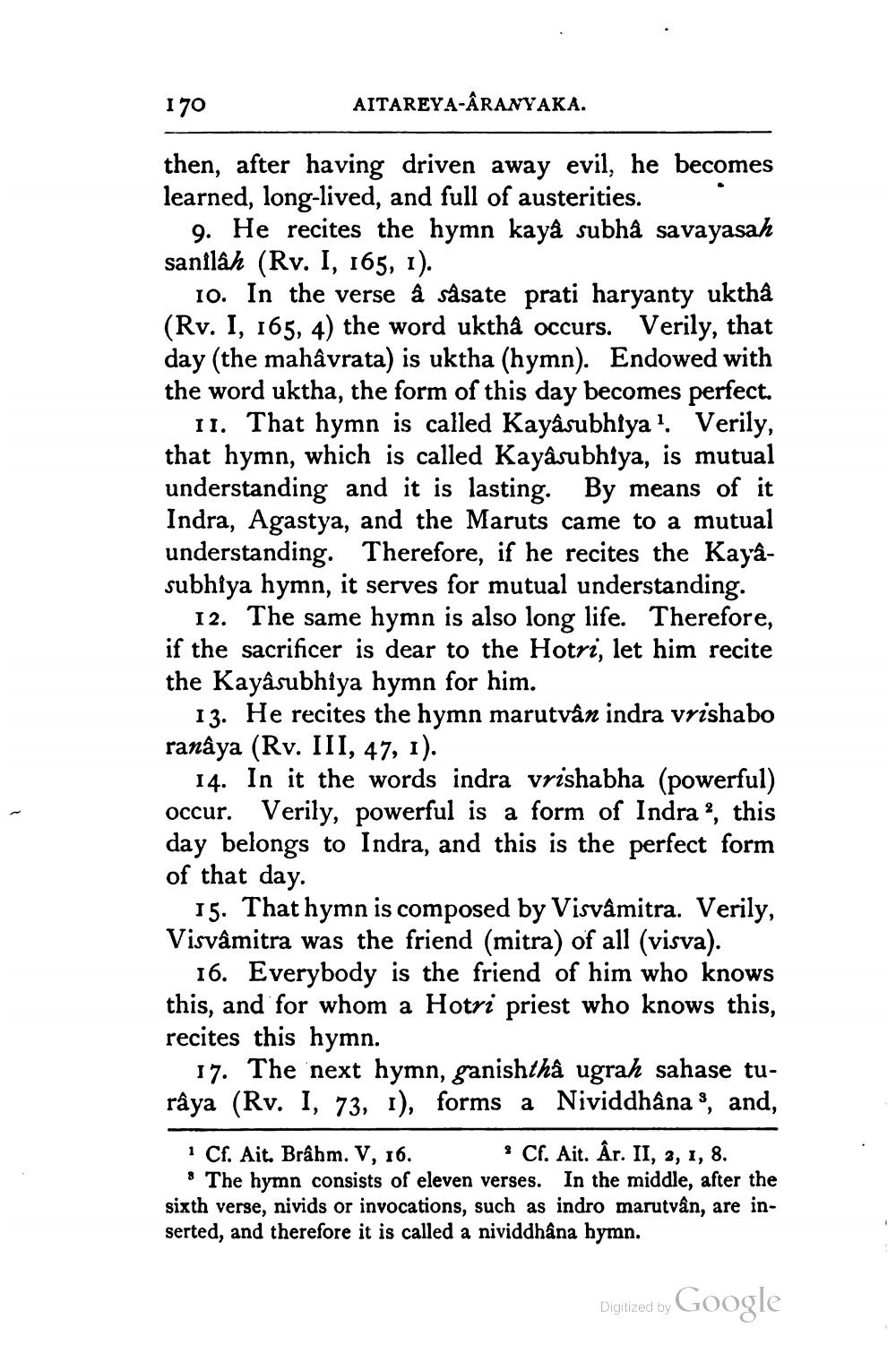________________
170
AITAREYA-ARANYAKA.
then, after having driven away evil, he becomes learned, long-lived, and full of austerities.
9. He recites the hymn kaya subhà savayasah sanilâh (Rv. I, 165, 1).
10. In the verse à sàsate prati haryanty ukthâ (Rv. I, 165, 4) the word ukthå occurs. Verily, that day (the mahâvrata) is uktha (hymn). Endowed with the word uktha, the form of this day becomes perfect.
11. That hymn is called Kayâsubhiya! Verily, that hymn, which is called Kayâsubhiya, is mutual understanding and it is lasting. By means of it Indra, Agastya, and the Maruts came to a mutual understanding. Therefore, if he recites the Kayasubhiya hymn, it serves for mutual understanding.
12. The same hymn is also long life. Therefore, if the sacrificer is dear to the Hotri, let him recite the Kayâsubhiya hymn for him.
13. He recites the hymn marutvân indra vrishabo ranâya (Rv. III, 47, 1).
14. In it the words indra vrishabha (powerful) occur. Verily, powerful is a form of Indra, this day belongs to Indra, and this is the perfect form of that day.
15. That hymn is composed by Visvâmitra. Verily, Visvâmitra was the friend (mitra) of all (visva).
16. Everybody is the friend of him who knows this, and for whom a Hotri priest who knows this, recites this hymn.
17. The next hymn, ganishthâ ugrah sahase turâya (Rv. I, 73, I), forms a Nividdhâna s, and, 1 Cf. Ait. Brâhm. V, 16.
Cf. Ait. Âr. II, 2, 1, 8. • The hymn consists of eleven verses. In the middle, after the sixth verse, nivids or invocations, such as indro marutvân, are inserted, and therefore it is called a nividdhana hymn.
Digitized by Google




